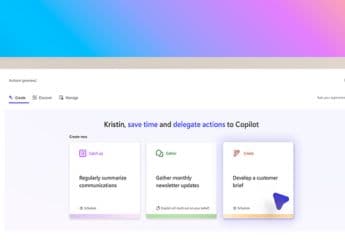- Home
- Mobiles
- Mobiles Features
- Commemorating Steve Jobs, 14 Years On: 5 Facts About the Man Behind Apple
Commemorating Steve Jobs, 14 Years On: 5 Facts About the Man Behind Apple
Steve Jobs succumbed to his illness on October 5, 2011, after a long battle with cancer.

Photo Credit: Apple
Steve Jobs (pictured) started Apple with Steve Wozniak in 1976
Apple Computer Company, now known for its iPhone, MacBook, and iMac models, was founded in 1976 by Steve Jobs, Steve Wozniak, and Ronald Wayne. Initially working out of Jobs' parents' garage, the Cupertino-based tech giant is now a $3.83 trillion (about Rs. 340 lakh crore) company. Jobs primarily set the tech firm's design philosophy and colour palette, for which its devices were once famous. On Sunday, Apple's Tim Cook commemorated the 14th death anniversary of his predecessor. The former CEO showcased the company's first iPhone in 2007 during a live event, in his iconic black turtle neck pullover. Many believe that this moment revolutionised the smartphone industry forever.
Here are five things that you should know about Steve Jobs, his achievements, and his short stint in India.
Five Things to Know About Steve Jobs in Brief:
1. Steve Jobs at Apple: Jobs and Wozniak first started the Apple Computer Company in 1976, with the Apple I, a microcomputer built by the latter. The company was later incorporated, now called Apple Inc., after Wayne joined the two. Later, Jobs and Wozniak found success with the Apple II. In 1985, Apple's board removed Jobs from his position, forcing him out of the company.
He, along with a few Apple employees, founded NeXT, a computer platform development company. Next year, Jobs bought an animation studio, which was later spun off as Pixar, responsible for movies like the Toy Story franchise.
In 1997, Jobs returned to Apple as the tech giant's CEO after Apple acquired NeXT. He and Jony Ive worked together to revive the brand by redefining the design language for its devices. This marked the beginning of the “Think Different” marketing campaign as well. He then remained the company's CEO until 2011, unveiling several new products, including the iPod, iPhone, and iPad, during those 14 years.
2. Steve Jobs on Design: In 1983, the Jobs attended the International Design Conference in Aspen. This is said to be the first such conference that he was attending, said Jony Ive, the famous product designer. At the event, he pointed out that the “design effort in the US” at that time was predominantly focused on automobiles, while having little consideration for consumer electronics.
On the stage, Jobs predicted that by 1986, personal computer (PC) sales would surpass the sales of cars. People would eventually start spending more time on their PC than in their car.
He believed that this shift was inevitable. PCs would become a pervasive new category. During the conference, he also requested the designers in the audience to help, asking them to start thinking about the design of consumer electronics products. Jobs said that these devices, whether “designed well or designed poorly,” would still be made.
3. His Battle With Cancer: In a post on X (formerly Twitter), Apple's Chief Executive Officer, Cook, remembered Jobs on his 14th death anniversary, saying, “We miss you, my friend.” He added, “Steve saw the future as a bright and boundless place, lit the path forward, and inspired us to follow.” Cook took over as CEO in 2011 after Jobs tendered his resignation, becoming the Chairman of the Board.
Jobs, in his resignation letter, said that he can “no longer meet” the expectations and fulfil his duties as the Apple CEO. In the same letter, he named Cook as his successor, who was serving as the Chief Operating Officer (COO) of the company. “I believe Apple's brightest and most innovative days are ahead of it. And I look forward to watching and contributing to its success in a new role,” he said.
Jobs was first diagnosed with pancreatic cancer in 2003, which later turned out to be a “rare, less aggressive type” of islet cell neuroendocrine tumour. While he gradually recovered, his body relapsed in 2006. Reportedly, Cook offered to donate a piece of to Jobs, saying, “I beg you, mighty Jobs, take my liver”. To which the ailing CEO replied that he would never allow him to do that, as per a report.
On October 5, 2011, the Apple co-founder succumbed to his illness, breathing his last at his Palo Alto home in California. The cause of death was reported to be “respiratory arrest” and cancer. He was born on February 24, 1955, as Steven Paul Jobs.
4. Steve Jobs in India: According to his biography, Jobs first visited India in mid-1974, seeking inspiration. His college friend, Daniel Kottke, accompanied him on this journey. He famously returned to the US with a shaved head with a new perspective on spirituality.
He also visited Neem Karoli Baba's ashram, which was found to be deserted after the spiritual figure's death. Jobs' admiration for India's father of the nation, Mahatma Gandhi, is also said to have increased. His trip to India allegedly propelled the “Think Different” ideal.
5. Steve Jobs in Pop Culture: In 2011, shortly after his demise, a documentary film, dubbed ‘Steve Jobs: One Last Thing', was released. It attempted to tell the story of the Apple co-founder through interviews with many people around him, who either influenced him, shaped his career, or were part of his life. It allegedly tried to give people a peek into his life. Published in October 2011, his biography was written by Walter Isaacson.
However, the most famous feature film based on his life was released in 2013, where Ashton Kutcher played Jobs. The movie took the audience through his brief time at Reed College, to India, until his death. The movie showed his negative and positive characteristics. Another feature film, called ‘Steve Jobs', was released in 2015, too.
Get your daily dose of tech news, reviews, and insights, in under 80 characters on Gadgets 360 Turbo. Connect with fellow tech lovers on our Forum. Follow us on X, Facebook, WhatsApp, Threads and Google News for instant updates. Catch all the action on our YouTube channel.
Related Stories
- Samsung Galaxy Unpacked 2025
- ChatGPT
- Redmi Note 14 Pro+
- iPhone 16
- Apple Vision Pro
- Oneplus 12
- OnePlus Nord CE 3 Lite 5G
- iPhone 13
- Xiaomi 14 Pro
- Oppo Find N3
- Tecno Spark Go (2023)
- Realme V30
- Best Phones Under 25000
- Samsung Galaxy S24 Series
- Cryptocurrency
- iQoo 12
- Samsung Galaxy S24 Ultra
- Giottus
- Samsung Galaxy Z Flip 5
- Apple 'Scary Fast'
- Housefull 5
- GoPro Hero 12 Black Review
- Invincible Season 2
- JioGlass
- HD Ready TV
- Laptop Under 50000
- Smartwatch Under 10000
- Latest Mobile Phones
- Compare Phones
- Lava Agni 4
- Wobble One
- OPPO Reno 15 Pro
- OPPO Reno 15
- Vivo Y500 Pro
- Realme GT 8 Pro Aston Martin F1 Limited Edition
- Huawei Mate 70 Air
- Moto G57
- Asus ProArt P16
- MacBook Pro 14-inch (M5, 2025)
- iQOO Pad 5e
- OPPO Pad 5
- Fastrack Revoltt FR2 Pro
- Fastrack Super
- Acerpure Nitro Z Series 100-inch QLED TV
- Samsung 43 Inch LED Ultra HD (4K) Smart TV (UA43UE81AFULXL)
- Asus ROG Ally
- Nintendo Switch Lite
- Haier 1.6 Ton 5 Star Inverter Split AC (HSU19G-MZAID5BN-INV)
- Haier 1.6 Ton 5 Star Inverter Split AC (HSU19G-MZAIM5BN-INV)

















